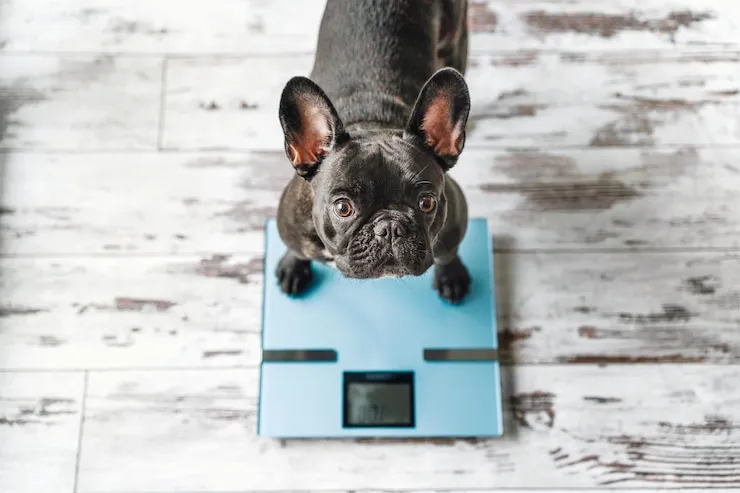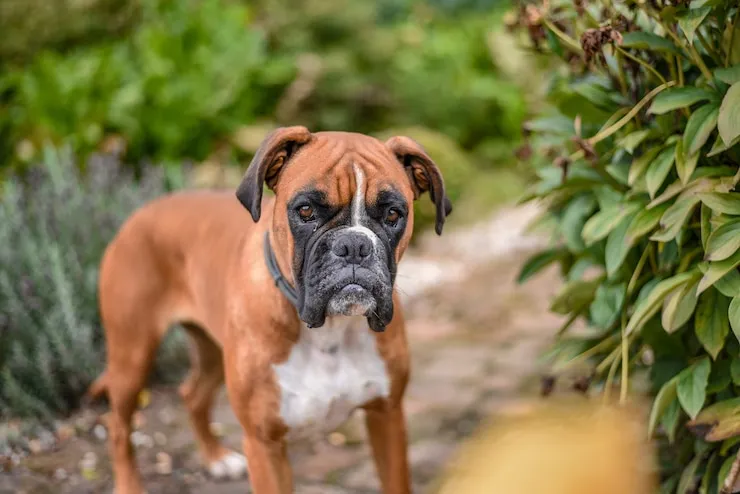The Cane Corso stands among the most important and emotionally charged canine breeds in the canine world. With its strong, athletic figure and unwavering fidelity, this Italian mastiff is a natural guardian and loyal companion. Still, minding a robust strain requires careful attention to its weight and physical development. Proper Cane Corso weight operation is essential not only for appearance but also for long-term health, mobility, and quality of life. In this expansive companion, you’ll find all you need to know about complete size and height maps, weight vaticinator styles, typical joker and female weight ranges, and expert strategies for effective weight control. Whether you’re raising a puppy dog or sustaining a grown-up, this in-depth resource equips you with the tools to cover, support, and optimize your Cane Corso’s well-being.
Cane Corso Weight Chart
| Age | Male Weight (lbs) | Female Weight (lbs) |
| 8 Weeks | 20 – 28 | 18 – 26 |
| 3 Months | 35 – 45 | 30 – 40 |
| 6 Months | 65 – 75 | 60 – 70 |
| 9 Months | 85 – 95 | 75 – 85 |
| 12 Months | 95 – 110 | 85 – 100 |
| 18+ Months | 100 – 120+ | 90 – 110 |
A Cane Corso puppy dog transforms remarkably presto in its first time, developing from a compact ball of energy into a redoubtable, muscular grown-up. Tracking weight over time helps ensure healthy growth, identifying trends that may indicate underweight, obesity, or growth diseases. Below is a refined, empirically deduced size map pressing typical weight ranges for males and females at crucial experimental stages. These estimates draw from the Kennel Club guidelines, breeding norms, and veterinary growth data.

At 8 Weeks:
By this age, most Corso puppies have been weaned and are ready to join their new home. Male puppies generally weigh between 20 and 28 pounds, while females tend to be slightly lower, weighing 18 to 26 pounds. This early foundation sets the stage for tracking healthy growth patterns.
At 12 Weeks (3 Months):
A rapid-fire growth phase begins. Males generally weigh 35 to 45 pounds, and females weigh 30 to 40 pounds. Some variation is anticipated based on birth weight and genetics.
At 24 Weeks (6 Months):
Nearing the majority, puppies will be substantial. Males weigh roughly 65 to 75 pounds, with ladies near in at 60 to 70 pounds. Muscle development becomes apparent, and the bones cake.
At 36 Weeks (9 Months):
Growth slows but continues steadily. Males tip the scales at 85 to 95 pounds, while ladies weigh in at 75 to 85 pounds. Numerous breeders and stagers use this stage to acclimate training plans and nutrition.
At 52 Weeks (12 Months/1 Year):
Approaching maturity, males total 95 to 110 pounds, and ladies stand at 85 to 100 pounds. While some sexual maturity is reached, cadaverous growth may continue up to 18 months.
At 18 Months (Completely Mature):
Adult males generally weigh 100 to 120 pounds, with exceptionally large individuals passing 125 pounds. Completely grown ladies weigh between 90 and 110 pounds. This final phase should reflect slow, stable weight change.
These figures serve as healthy marks. Slight diversions may be grounded in lineage, diet, and life. Significant divergence generally warrants veterinary guidance.
Cane Corso Height Chart
| Age | Male Height (inches) | Female Height (inches) |
| 3 Months | 14 – 17 | 13 – 16 |
| 6 Months | 20 – 23 | 19 – 22 |
| 9 Months | 23 – 25 | 22 – 24 |
| 12 Months | 25 – 27 | 23 – 25 |
| 18+ Months | 26 – 28 | 24 – 26 |
Weight alone doesn’t give a complete picture. Height, measured at the “withers” (the top of the shoulder blades), offers insight into cadaverous structure, body proportion, and breed conformation. Monitoring growth by height can assure parents that development is on track.

Then there’s a breakdown of typical height ranges:
3 Months (12 Weeks):
Male puppies stand between 14 and 17 inches, while females reach 13 to 16 inches. At this stage, proportions are developing fleetly, adding bone length and circumference.
6 Months (24 Weeks):
Males grow to 20 to 23 elevation, with ladies ranging 19 to 22 elevation. The rate of height to body weight becomes more mature as bone development continues.
9 Months (36 Weeks):
Males measure 23 to 25 elevation, and ladies 22 to 24 elevation. Growth will decelerate from then, though muscle mass continues to increase until around 18 months.
12 Months (52 Weeks):
Males reach 25 to 27 elevation, and ladies 23 to 25 elevation. Fresh height gain beyond this stage is minimal, generally a couple of elevations max.
18 Months and Aged:
Completely progressed males stand between 26 and 28 elevations, while ladies stand 24 to 26 elevations. Most modern Cane Corsos fall within these heights, although variations exist by birth.
Monitoring both weight and height gives a fuller picture. A canine that’s heavy but short may be fat, while an altitudinous canine that weighs little may be underdeveloped.
How to Calculate Your Cane Corso Weight?

Predicting adult weight helps possessors prepare for eventual diet, training, and casing requirements. Though no formula is infallible, veterinarians and breeders frequently use established styles to project growth.
The 14-Week Multiplier Method:
1. Use of Formula to Calculate Cane Corso Weight:
Estimated Adult Weight = Puppy Weight at 14 Weeks × 2.5
By this stage, most puppies have regularized growth patterns, making the formula nicely accurate. Illustration: A puppy dog weighing 40 pounds at 14 weeks likely reaches 100 pounds as a grown-up. The formula may err by about 5-10, but generally offers a helpful estimate.
2. Another System for Calculating Cane Corso Weight:
Weight Doubling Map (for 8-Week Puppies)
Estimated Adult Weight = Weight at 8 Weeks × 4 (or 5)
Still, doubling to 100-125 pounds by majority is presumptive if a puppy dog is 25 pounds at 8 weeks. Since early weight can be susceptible to environmental factors, the 14-week system is more accurate.
3. Monitoring Growth Curves for Cane Corso Weight
Veterinarians maintain standardized growth maps. Possessors can measure yearly and chart their puppy dog’s progress. A healthy growth wind is smooth and harmonious; jagged or ended growth may signal health or nutritive issues. These maps also show percentile rankings, helping possessors stand out against healthy peers.
4. Inheritable Influence and Variation:
Genetics play a vital part; puppies from larger parents or known big-strain lines will naturally exceed average weights. Know your puppy dog’s lineage and compare siblings for a clearer understanding.
Limitations & Cautions:
> Flashback
> Formulas offer estimates, not guarantees.
> Growth rate, diet, exercise, and health significantly impact issues.
Rapid weight gain is dangerous, especially for joints and bones. Tracking weight yearly and consulting your warhorse helps maintain a healthy pace.
Typical Cane Corso Weight Ranges for Males and Females
Knowing average adult weight ranges framed by coitus is essential. Cane Corsos are sexually dimorphic; males are heavier and broader, and females are slender and slightly shorter.
Man Cane Corso Weight:
> Average Adult Weight: 100-120 pounds
> Height: 26-28 elevation at withers
Males display pronounced muscles, broader chests, and square head shapes. Their larger size contributes to lesser strength and presence.
Female Cane Corso Weight:
> Average Adult Weight: 85-110 pounds
> Height 24–26 elevation
Ladies match males in power and structure but are more compact, nimble, and slightly faster to maturity.
Range Axes & Variability:
Oversized males may exceed 125 pounds if from large-strain lines and entering optimal nutrition.
Pet-Size Lines: These Cane Corsos might lean lower, falling just under standard ranges but still showing strain characteristics.
Keep in mind that the body condition, the canine’s physical appearance, and muscle tone matter more than rigorous weight. A manly Cane Corso at 115 pounds with well-defined musculature and a visible midriff can be healthier than a 100-pound canine with redundant body fat.
Strain Norms:
According to major kennel clubs, the Cane Corso standard for males is 25-27.5 inches in height and 100–110 pounds, and for females, 23.5-26 inches in height and 88-99 pounds. Clubs advise against axes but accept slight dissonances within healthy parameters.

Suggestions for Effective Weight Control
Maintaining a Cane Corso’s ideal weight is not about appearance; it’s about mobility, lifetime, and overall well-being. Fat tykes face serious health pitfalls; light tykes warrant physical adaptability. Achieving balance requires multi-pronged strategies embedded in responsible care.
Nutrition Foundation of Health:
High-Quality Breed-Specific Diet: Choose foods formulated for large breeds. These frequently feature proteins sourced from meat, controlled calorie-to-fat rates, common-support complements, and balanced minerals.
Portion Control: Always measure food. Use feeding guidelines on packaging as a basis, conforming to metabolism, exertion, and age. Generally, adult Cane Corsos bear 3,000-3,500 calories daily, depending on their life. Puppies need further energy per pound, nearly 2-3% of their body weight daily.
Slated Reflections: Free-feeding encourages unhealthy input. Grown-ups thrive on two meals per day; puppies profit from three meals until six months, also transitioning.
Healthy Treating: Treats should remain under 10% of diurnal sweet input. Use nutritional options like raw carrots, apple slices (seed-free), or spare flesh. For training, consider portioned, low-calorie, marketable treats.
Avoid Dangerous Additions: Fatty foods like chocolate, grapes, onions, and xylitol are poisonous. Redundant fat or carbs can lead to fat accumulation and pancreatitis, both dangerous for Corsos.
Supplements should only be used under veterinary guidance. Glucosamine/chondroitin may help common health during growth or in aged tykes. Probiotics, omega-3s, or antioxidants can prop up digestion and overall health, but they aren’t backups for a quality diet.

Exercise Physical & Mental Strength:
Cane Corsos have high energy and keen intelligence. Without proper outlets, they become physically and behaviorally unhealthy.
Daily walks, at least 45-60 minutes on the leash. Some tykes appreciate two shorter walks or one long, blessed rollick.
Play Sessions: Fetch, tug-of-war, or controlled Frisbee sessions, formerly or biweekly, support muscle strength and exertion.
Structured Training: Affront not welcome obedience training isn’t just internal exercise; it’s an occasion for physical co-exertion and environmental disquisition.
Dexterity and nose work are excellent for internal stimulation and burning energy, ideal then and there to help tedium and support fitness.
Swimming is a low-impact exercise ideal for common health, especially for Corsos that are growing or recovering.
Avoid Overexertion in Youth: Avoid high-impact conditioning (like jumping) before 18 months to cover joints. Moderate, gradational exercise is crucial.

Monitoring and Record Keeping:
Yearly weigh-ins: Use a dependable scale or Warhorse visits. Track via spreadsheet or journal, including age, weight, food quantity, and exercise. Identify overhead or over trends beforehand.
Body Condition Score (BCS): Veterinarians use a 1-9 scale. Around 4-5 is ideal for utmost Cane Corso caricatures should be palpable under light pressure, with the midriff visible from above and the midriff visible from the side.
Photographic Updates: Yearly prints help observe shape changes. As leather fleeces can obscure visual cues, prints aid in monitoring.
Adaptations and Warhorse Support:
Diet Tweaking: If gaining too much weight, reduce portions slightly or switch to lower-calorie food. However, increase food quantity gradually if light.
Exercise Adjustment: A more sedentary canine may need further exertion; a fat canine may gain faster if exertion drops.
Warhorse checks: Biannual visits ensure early discovery of issues like hip dysplasia/elbow dysplasia, heart conditions, hypothyroidism, and parvovirus. Some conditions contribute to weight changes and need medical treatment.
Special Conditions: Dogs with arthritis, common issues, or rotundity may profit from targeted salutary operation. Traditional joint-support diets, omega-3 supplementation, or controlled feeding strategies might be recommended.

Life Impact and Real World Tips:
Serve Food as Enrichment. Use mystification coliseums or hide portions around the house to promote rustling gestures. Increases internal stimulation while decelerating eating.
Manage “Counter Browsers”: Cane Corsos are intelligent and opportunistic. Keep counters and trash secured to avoid food theft and unhealthy weight gain.
Family Involvement: Everyone feeding or playing with the canine should understand portion sizes and rules to help prevent accidental overfeeding.
Seasonal Variation: Dogs frequently need fewer calories during downtime. Track weight and acclimate food input based on seasonal temperature, energy, and fleece consistency.
Puppy dog vs Adult Requirements: Puppies need nutrients for growth, and switch to adult food only after the growth plates close at 18 months. Elder tykes may need reduced fat and further fiber.

Belting It All Together
Maintaining an ideal Cane Corso Weight is a long-term commitment that benefits both the canine and the proprietor. By combining detailed size/height maps, dependable weight vaticinator formulas, coitus-specific growth prospects, and practicable weight operation strategies, you ensure your Corso stays physically fit, mentally engaged, and emotionally happy.
Track Growth Regularly: Yearly weight and height records guide care opinions.
Use Sensible Formulas: A 14-week projected weight offers early sapience.
Fate: Manly vs Womanish Morals. Each gender has its physiological weight range.
Commit to Diet & Exercise: Good nutrition and diurnal exertion are nonnegotiable.
Examiner Progress & Acclimate: Keep records, use BCS evaluations, and consult your warhorse regularly.
Help Problems Proactively Beforehand, discovery of fat or light prevents common damage, metabolic issues, and lifelong complications.
Final Thoughts about Cane Corso Weight
The Cane Corso is a majestic, large-breed dog that demands careful physical management to thrive. Their grandeur must be matched by owners’ dedication to monitoring weight, encouraging exercise, and supporting healthy growth. For the best results, maintain detailed logs, lean on veterinary guidance, and adjust diet or routine as needed. A Cane Corso weighs in its ideal body condition, not only looks powerful, but it feels and lives powerfully too.
Frequently Asked Questions
1. What should you do if the Cane Corso dog’s weight increases or decreases?
Major growth changes typically occur between 8 and 24 weeks. Focus on that period for healthy development.
2. Is a slight belly tuck okay, or is that underweight?
A belly tuck is healthy; the waistline should dip slightly behind the ribs when viewed from the side. An exaggerated tuck may signal undernutrition; consult your vet if concerned.
3. At what age should I switch from puppy food to adult food?
Transition occurs at around 18 months, after the growth plates close. Switching too early can cause nutrient overload; too late can lead to excess calories and weight gain.
4. My vet prescribed joint supplements; will they help manage weight?
Indirectly. Supplements can alleviate pain, making exercise easier and helping burn calories. They don’t directly reduce weight, but they support an active lifestyle.
5. Can I let my Cane Corso exercise off-leash in the park?
Only if the dog is voice-trained, responsive, and in a secure environment. Until at least 12 months (and preferably 18), off-leash should be controlled or avoided to prevent injury.













